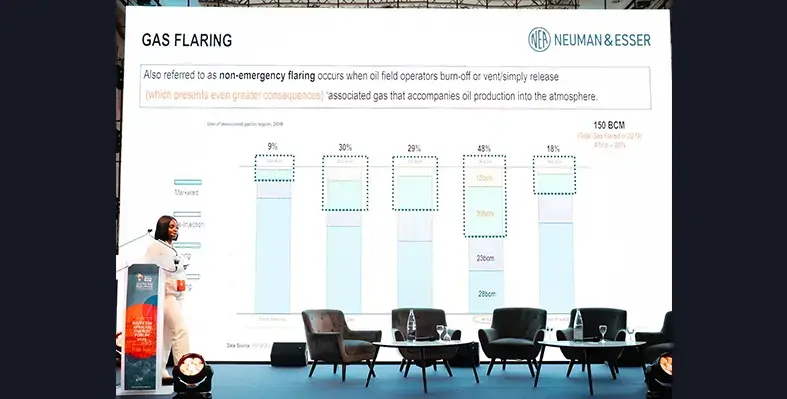Africa has been paying a hefty price for a long time now as it lacks the right infrastructure to advance the practice of gas flaring
During a session at Invest in African Energy 2025 titled 'Flare Gas Utilisation: The Importance of Mid-Scale Integrated Gas Commercialisation Solutions', Nmesoma Okereke, sales manager and flare gas recovery specialist at Neuman & Esser, emphasised on addressing the challenge with scalable gas monetisation strategies.
“The most important reason for gas flaring is a lack of infrastructure, but also cost inefficiencies,” said Okereke. “In the past, it was more economically feasible to flare gas than develop or commercialize the gas. That is no longer the case with the rise of innovative gas solutions.”
Three of the world’s top nine gas-flaring countries are in Africa, said Okereke, collectively responsible for an estimated 60% of the continent’s gas flaring. Nigeria alone flared roughly 193 bn cu/ft of gas in 2024, while producing 2.5 trillion cu/ft of gas. Leveraging that wasted gas can generate as much as US$1bn, making a huge difference in a country where around 40% of the population is yet to experience the benefits of electricity.
Nigeria’s case study illustrates the dual challenge of wasted resources and unmet energy demand. According to Okereke, Nigeria needs five times its current domestic gas supply to reach its goal of 30 GW of power by 2030.
With flaring becoming less economically justifiable due to emerging technologies and modular gas utilisation options, Okereke emphasised the need to shift toward mid-scale integrated solutions that can bridge the infrastructure gap and bring gas to market more quickly and efficiently.




